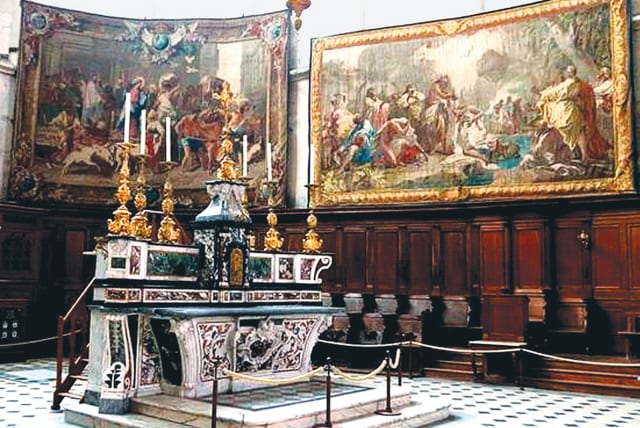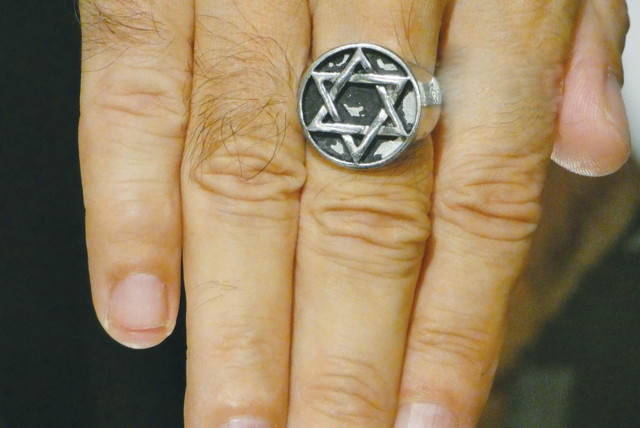A hidden Holocaust story from Viviers, France

Viviers is a charming medieval town with typical narrow, winding cobblestoned streets situated along the right bank of the Rhone River. But this small French town has a hidden Holocaust story.
We were on our fourth Viking River Cruise, this time exploring the Ardeche region of southern France. Viviers was on Viking’s enrichment excursions program and our small group was lucky to be assigned a local guide that had a secret story to tell.
Viviers is a charming medieval town with typical narrow, winding cobblestoned streets situated along the right bank of the Rhone River. Many of the original houses with their uniformly tiled roofs and ubiquitous shutters painted in pastel colors are still occupied. Viviers claim to fame is its continually in-use 12th century Saint-Vincent Cathedral which sits high above the lower town, where the common folk lived, from its great height in the upper town, where the clergy and wealthy citizens lived. The building has undergone periodic updates but still has details that hark back to Roman times while the apse with its eight chapels is traditional Gothic.
The Cathedral is renowned for the six original Gobelin tapestries gracing its walls. According to our guide, there had been seven, but the one of the Last Supper was “temporarily” removed in the 1970s by the French government for “restoration” and has subsequently ended up on permanent display in the Louvre Museum in Paris.
The story of Viviers, France, during the Holocaust
During our tour of Viviers, our guide pointed out the house where his parents lived during World War II with their first-born child, along with his mother’s brother and his wife. We stopped at the town square just a few yards further on – where he dramatically recounted their story.
As Western Europe began to crumble under the yoke of the Third Reich, a small group of Jewish professionals fled Poland and made their way southwest, barely outrunning the rapidly advancing Nazi occupation until the spring of 1942 when they landed in southern France.
Perhaps they had been trying to reach Avignon which had a sizable Jewish community, but the town of Viviers was as far as they got before the area was completely overrun by German soldiers and they were out of options. Among the frantic group were a young doctor and his wife. The survival of the other members of the group has been lost to history, but we did learn of the good doctor’s fate that afternoon and even almost 80 years later it’s telling still had a visceral effect.
Viviers was a small town with a few thousand inhabitants, of which only a handful were Jewish. The Nazis arrived in November 1942 and were garrisoned in Viviers and the surrounding towns after rounding up all the Jewish residents for transport to Auschwitz. Only a few Jews were successfully hidden by the staunchly Catholic population. Somehow our guide’s mother found the young Polish doctor, separated from his group, trying to hide from the Gestapo. She grabbed him off the street and hid him in a small cupboard in her attic, caring for him for two full years.
Viviers was not bombed during the war, and there was little action until November 1944 when the American troops began the liberation of France. All the German soldiers stationed in Viviers were hastily moved to repel the American invasion – leaving the occupation of the town to a squad of Hitler Youth led by a 15-year-old boy.
The boys of the squad, aged 9-15, full of their own power and the cruelty of youth, ran amuck, killing and terrorizing at will – and somehow uncovered the secret of the family hiding a Jew. The 15-year-old leader had our guide’s parents and young sister along with his mother’s brother and wife brought to the square outside their house; the very same square we were standing in listening to the harrowing tale.
The leader inquired where the Jew was hiding, and our guide’s mother casually replied “I don’t know what you are talking about.” This response predictably displeased the young man who removed his pistol from its holster and unceremoniously shot her brother in the head, killing him instantly. Again he asked where the Jew was hiding and with her brother lying dead at her feet, she again replied “I don’t know what you are talking about.” The frustrated youth responded that if the hiding place of the Jew was not revealed he would shoot the entire family. We don’t know what her response would have been – and thankfully she did not have to make one – because US forces, having broken through the German ranks, arrived in the square just in the nick of time. Seeing the deadly scene before them they shot the leader before he could pull the trigger again. The pistol that killed the brother was retrieved and is still in the possession of the family.
The Jewish doctor was miraculously reunited with his wife when the fighting ended. She had found refuge in a neighboring town when they were separated, but for two long years neither knew the other was alive. When they fled Poland everything was left behind but one sacred possession: a Star of David family ring. This precious ring was gifted by the doctor in gratitude to the family that sacrificed so much for him and which our guide proudly wears to this day.
After the war, the couple settled in Viviers where over the years the doctor was credited with saving many lives. He died at the ripe old age of 97.
The final irony is that being a devout Catholic, the mother felt it was her sacred duty to act as she had, and she never wanted to be acknowledged as a hero. That is why her name is not mentioned in this story and also why when Israel’s National Holocaust Memorial reached out to her to have her name inscribed in the wall of honor in the Garden of the Righteous she refused.
As it is inscribed in the Talmud (Sanhedrin 37a) whosoever saves a life, it is as though [s]he had saved the entire world.
For information on Viking’s destinations, cruises, and schedules: vikingcruises.com
Jerusalem Post Store
`; document.getElementById("linkPremium").innerHTML = cont; var divWithLink = document.getElementById("premium-link"); if (divWithLink !== null && divWithLink !== 'undefined') { divWithLink.style.border = "solid 1px #cb0f3e"; divWithLink.style.textAlign = "center"; divWithLink.style.marginBottom = "15px"; divWithLink.style.marginTop = "15px"; divWithLink.style.width = "100%"; divWithLink.style.backgroundColor = "#122952"; divWithLink.style.color = "#ffffff"; divWithLink.style.lineHeight = "1.5"; } } (function (v, i) { });

